I’ve lived in the south most of my life and we eat grits all the time, so I thought I knew what polenta was all about. But let me just tell you, this Creamy Polenta is on a whole other level. from the instant grits I was used to. While both grits and polenta are made with cornmeal, this Creamy Polenta has a rich texture, deep corn flavor, and super creamy consistency. I think Marsha’s exact words when we tested it in the studio were, “I think I’m in love…” Same, girl, same. I’m going to be making this polenta to serve with every stew, saucy bean dish, or braised meat from here on out.
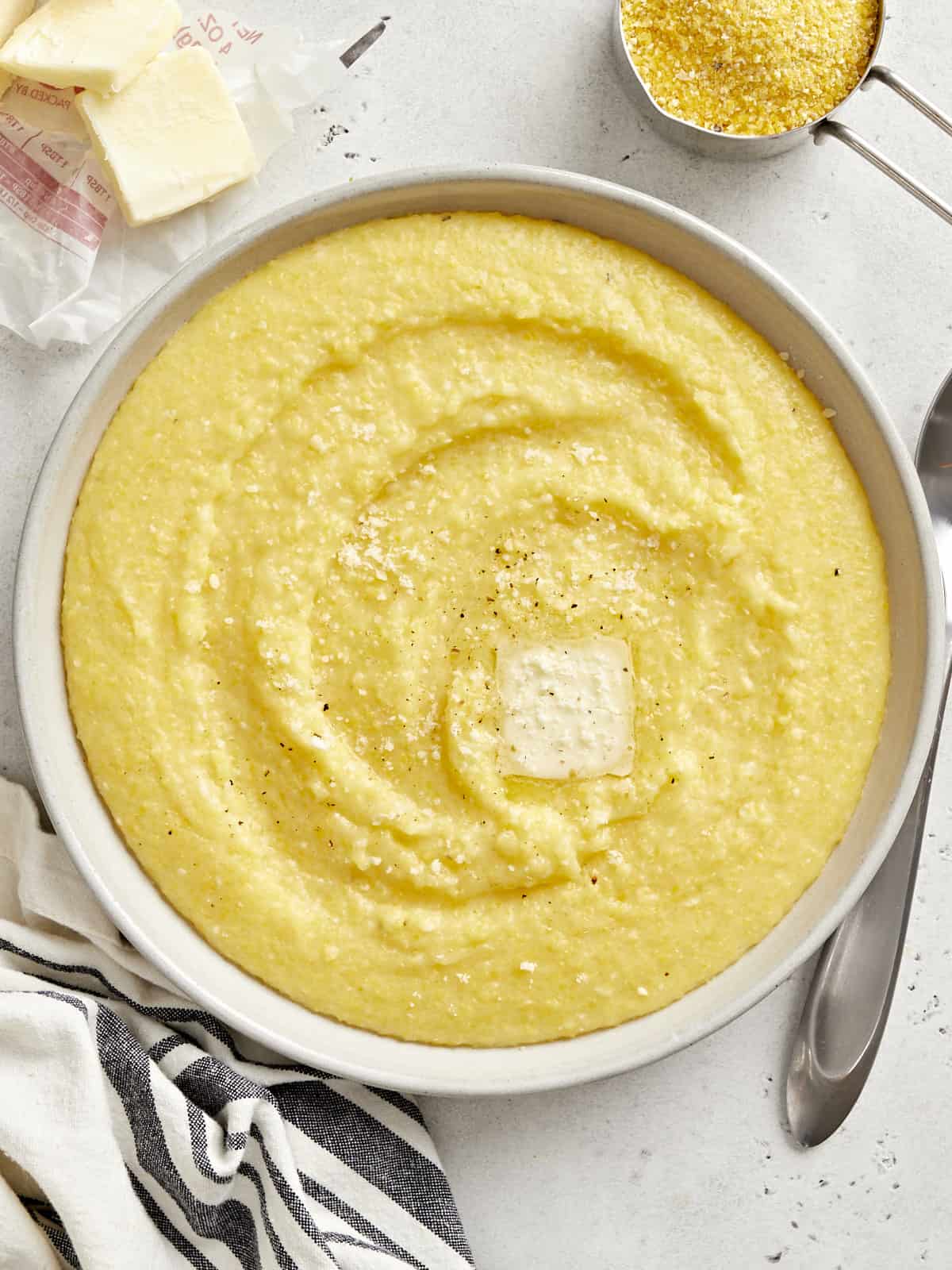
This post contains some affiliate links, which means that we make a small commission off items you purchase at no additional cost to you.
What is Polenta?
Polenta is a cornmeal mush made by boiling cornmeal until it’s tender. It can be served like a porridge or chilled until firm, sliced, and pan-fried for a crispier texture. While similar to grits, another type of cornmeal mush, polenta and grits are made with different varieties of corn. Polenta is made with flint corn, which has a more dense and chewy texture that holds up better to boiling than dent corn, which is used for grits. Grits are generally more finely milled, except stone ground grits, which are closer in texture to polenta. I find that polenta has a much better mouthfeel (less gloopy) and a stronger corn flavor. It’s absolutely delicious!
Ingredients for Creamy Polenta
To make this polenta recipe extra creamy and delicious, we go a little further than simply boiling the cornmeal in water. Here’s what you’ll need to make the dreamiest, creamiest homemade polenta:
- Polenta: You’ll need uncooked polenta for this recipe, which comes in a bag and looks like coarse ground or stone ground cornmeal. Depending on the store, you may either find this with dry grains, with Italian ingredients like pasta, or in the specialty or health food ingredients. One popular brand that you’re likely to find in most major U.S. grocery chains is Bob’s Redmill. If you have a store with bulk bins or have an Italian grocery nearby, you can probably find it priced for much less than chain grocery stores!
- Chicken Broth: Instead of boiling the polenta in plain water, we cooked the polenta in chicken broth which gives it tons of savory flavor. Make sure you use a full-flavor broth to give the polenta the best flavor. We use Better Than Bouillon to make our broth.
- Butter: A healthy dose of butter makes the polenta super creamy and delicious.
- Parmesan: Parmesan is stirred into the cooked polenta and gives it a slightly cheesy flavor and tons of savory umami.
How to Serve Polenta
Polenta is often served as the starchy base for a meal, similar to how rice is served as the bed for saucy dishes and stir-fries. Polenta pairs extremely well with stews, braised meats, saucy bean dishes, and roasted vegetables. It’s the perfect cozy companion to all of your warm winter meals. Try it with our Chicken Cacciatore, or Slow Cooker Beef Stew!
How to Store Leftovers
Leftover cooked polenta can be stored in the refrigerator for about four days. But, as with most starches, polenta will firm up when chilled. The best way to make use of chilled cooked polenta is to slice it and then pan-fry it into crispy cakes. These crispy polenta pieces are perfect for dipping in your favorite sauce, or serving as a side with dinner. If you prefer to serve the chilled polenta as a porridge, you’ll need to add more liquid (broth, water, or milk) and heat gently while stirring until it loosens up.
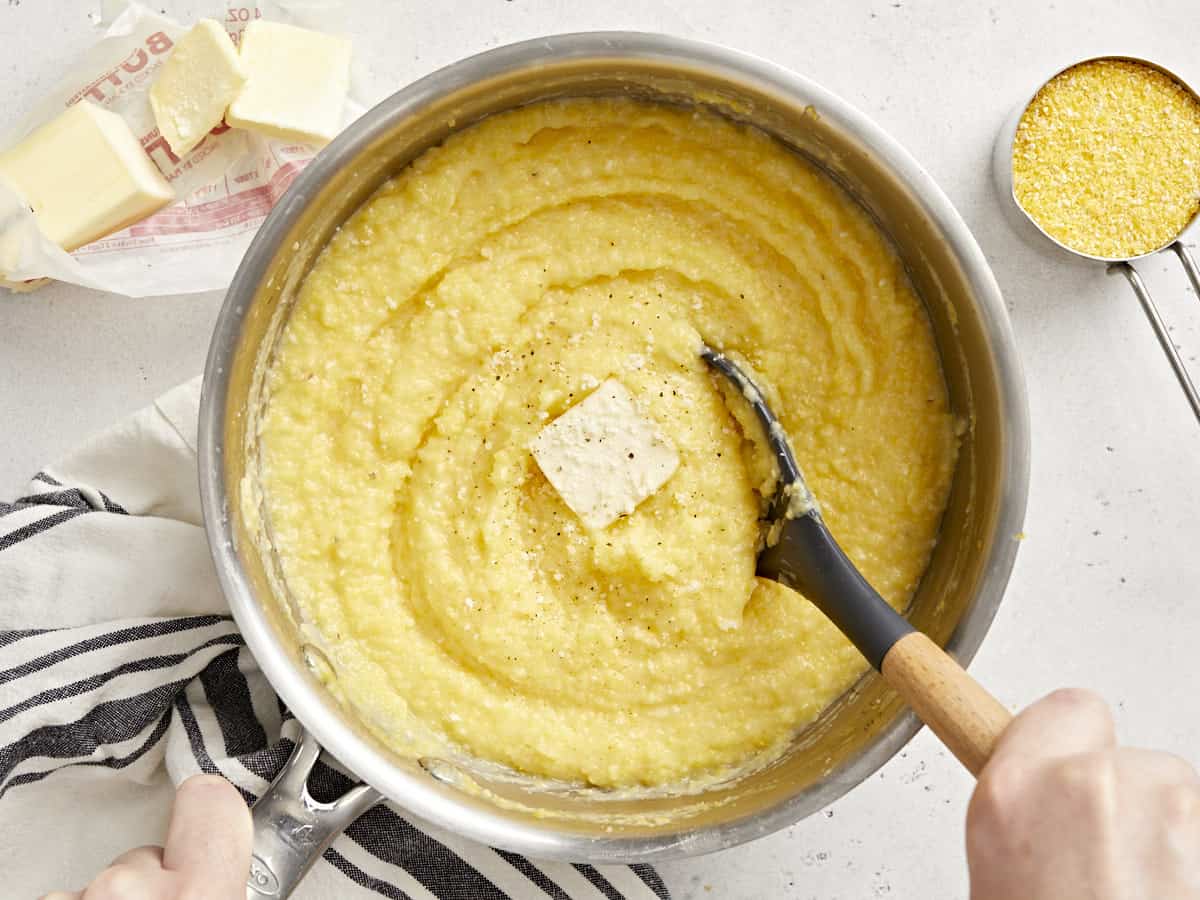
Creamy Polenta
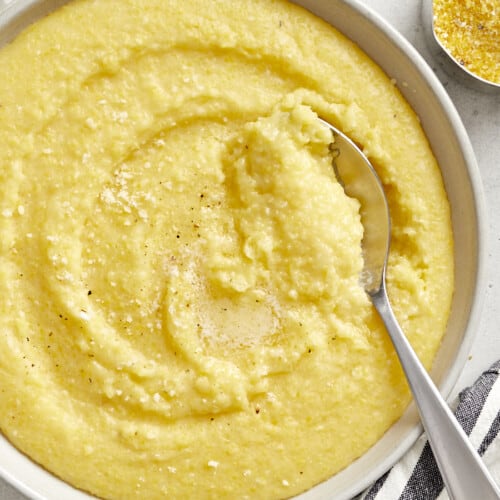
Ingredients
- 4 cups chicken broth ($0.42)
- 1 cup uncooked polenta ($1.06)
- 4 Tbsp salted butter ($0.44)
- 1/4 cup grated Parmesan ($0.40)
Instructions
- Add the chicken broth to a pot and bring it to a boil over medium-high heat.
- Once the broth is boiling, whisk in the polenta. Turn the heat down to medium-low and let the polenta simmer, stirring often, for about five minutes or until it has thickened.
- Turn the heat off and add the butter and Parmesan. Stir the butter and Parmesan into the polenta until fully melted. Taste the polenta and adjust the salt or butter as desired. Serve immediately.
See how we calculate recipe costs here.
Nutrition
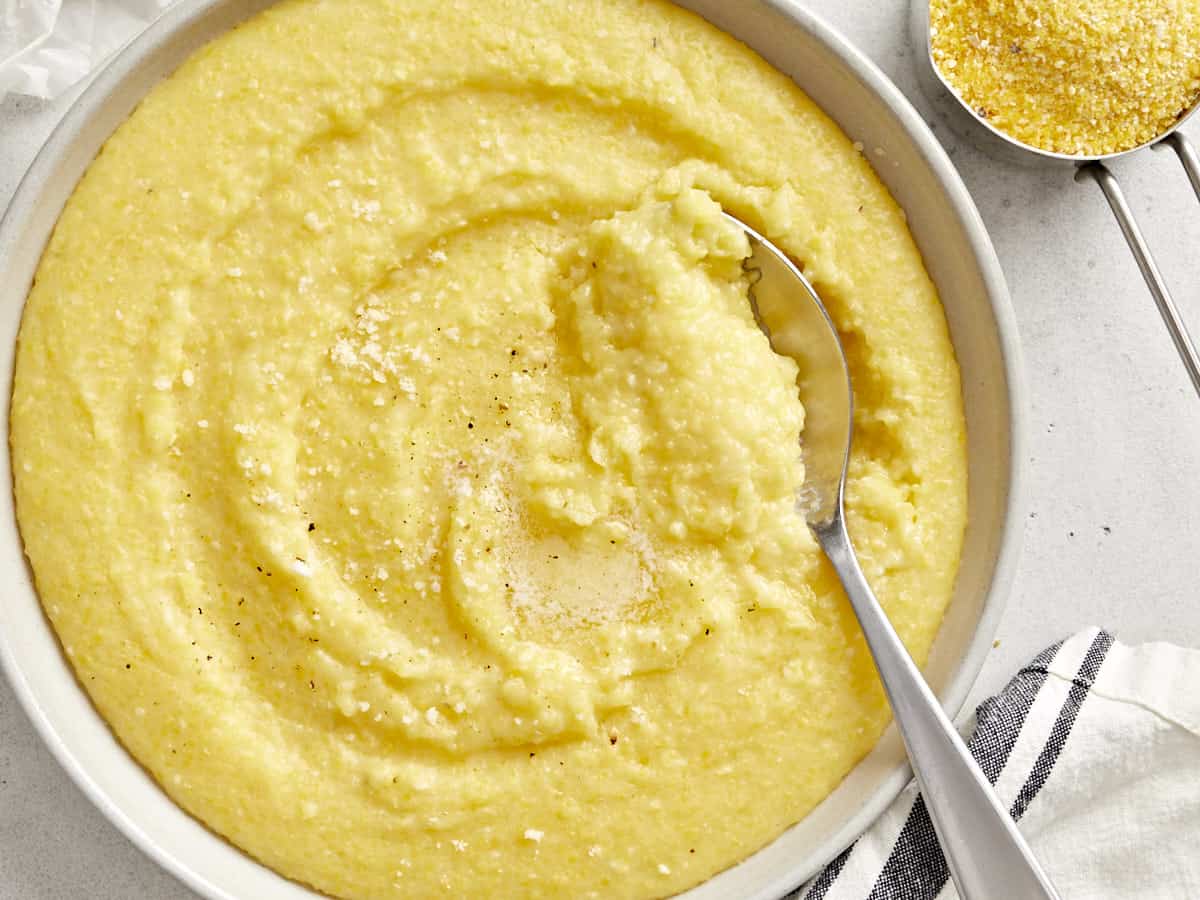
How to Make Polenta – Step by Step Photos
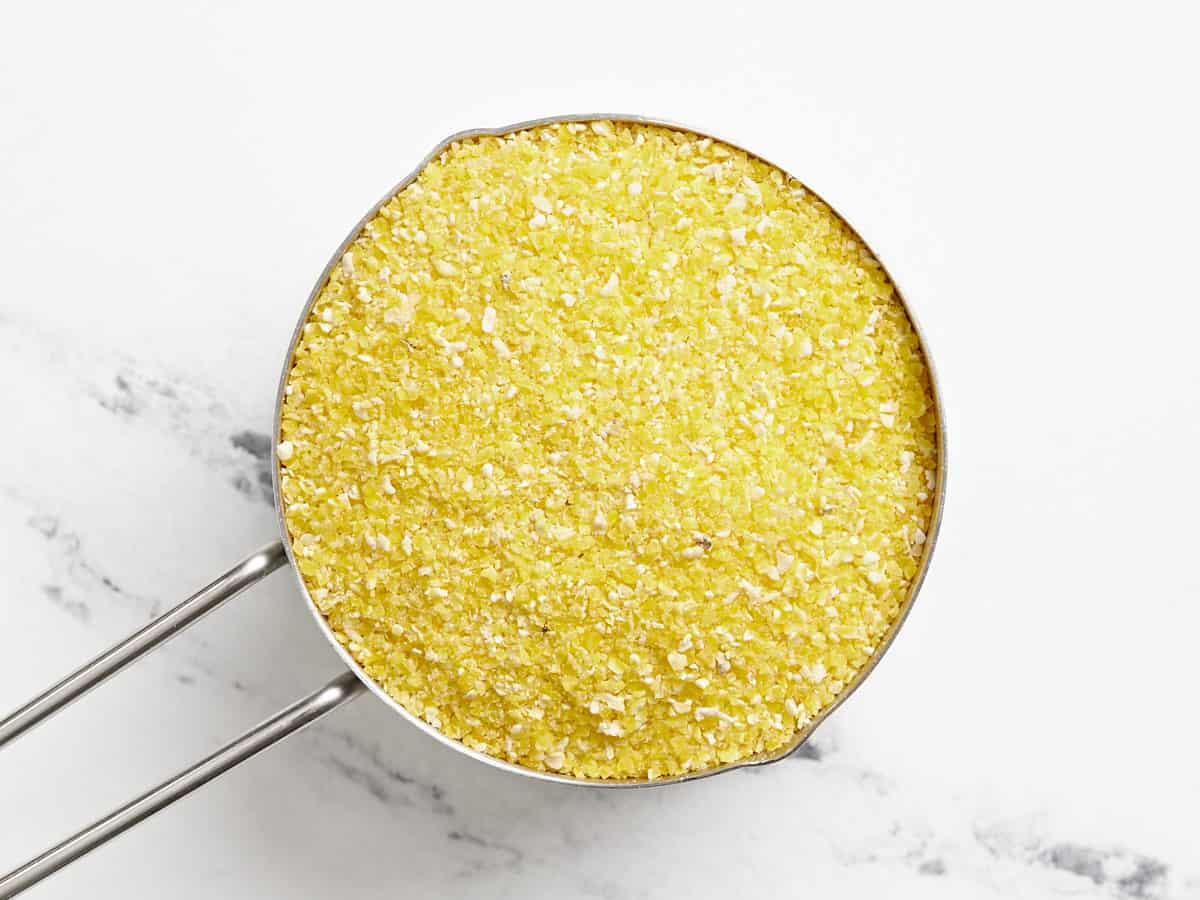
You’ll need one cup of uncooked polenta for this recipe. It should look like this, coarsely ground cornmeal.
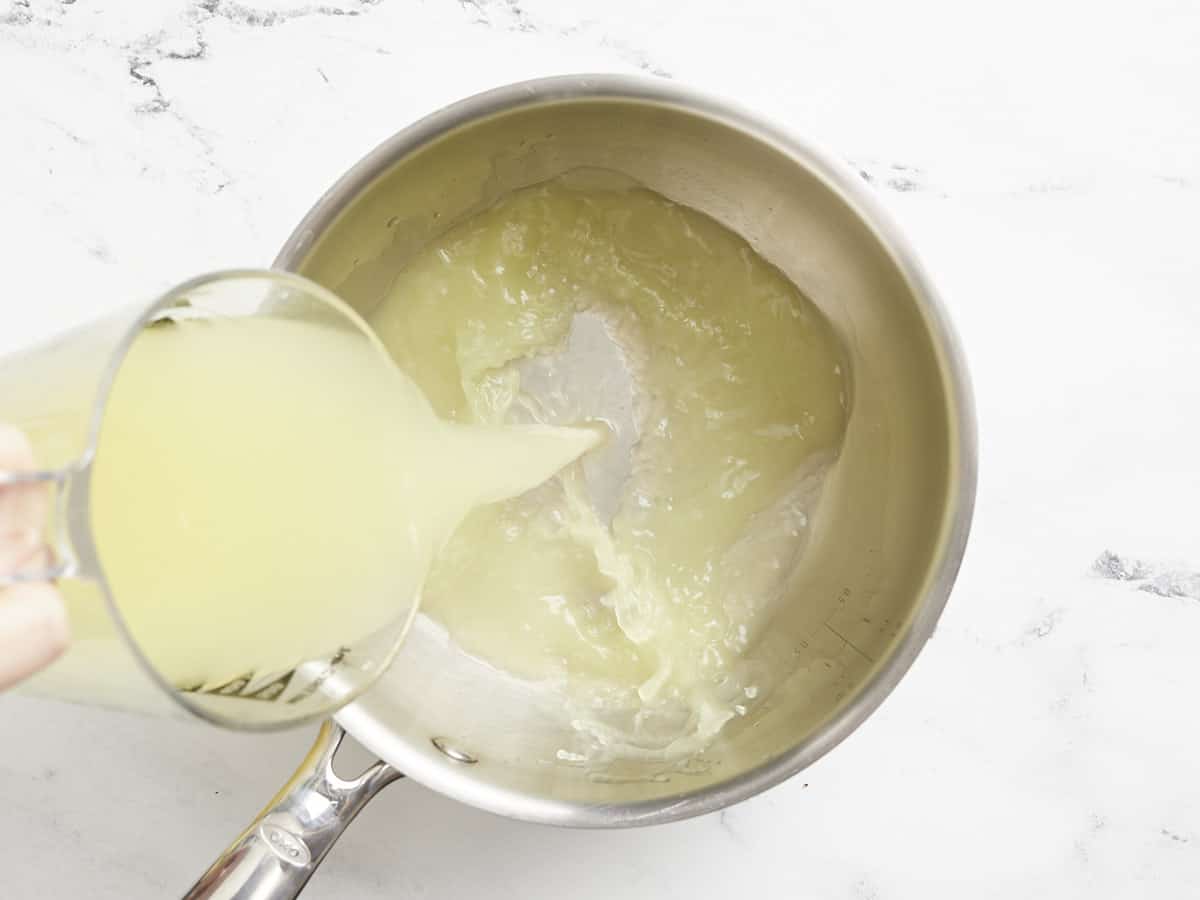
Add four cups of good chicken broth to a sauce pot and bring it to a boil over medium-high heat.
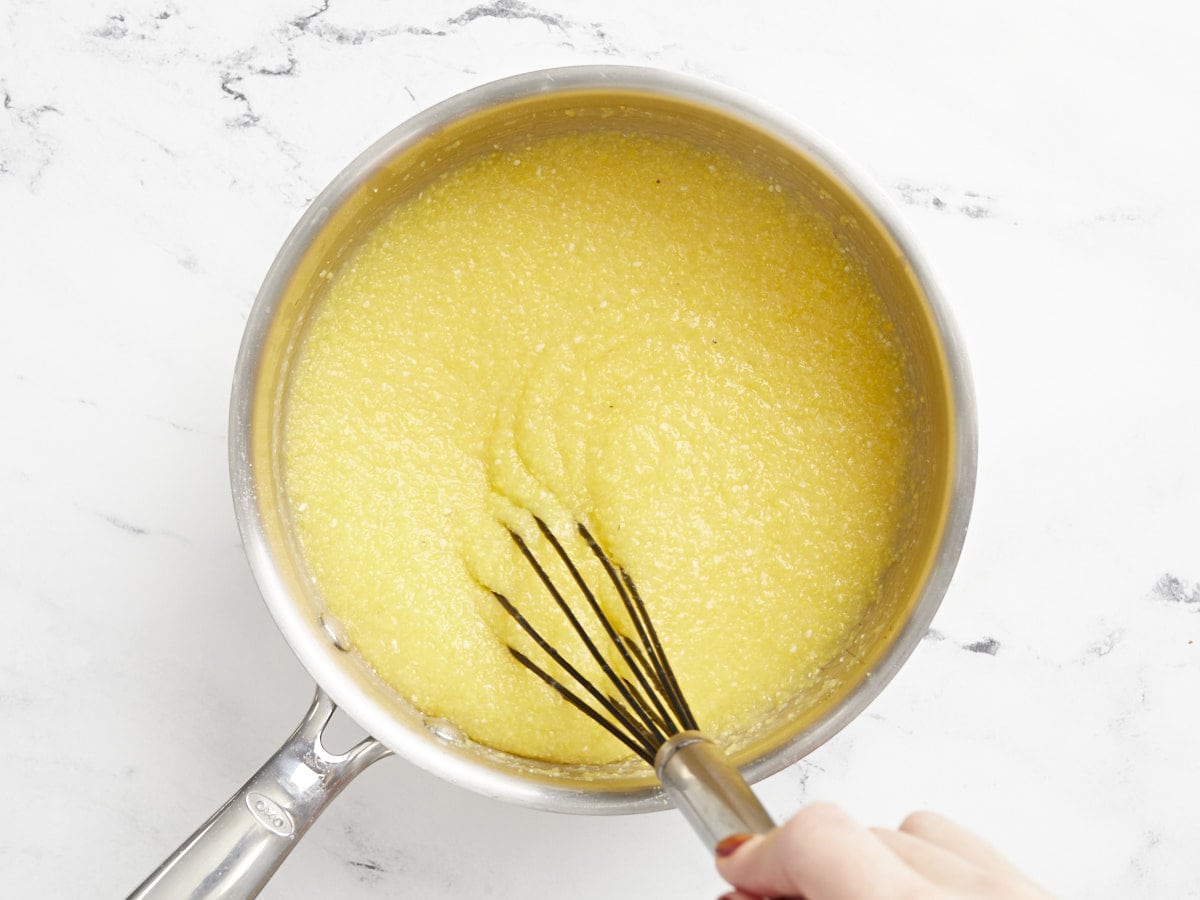
Once the broth is boiling, turn the heat down to medium-low and whisk in the polenta. Let the polenta simmer over medium-low, whisking often, for about five minutes or until it has thickened.
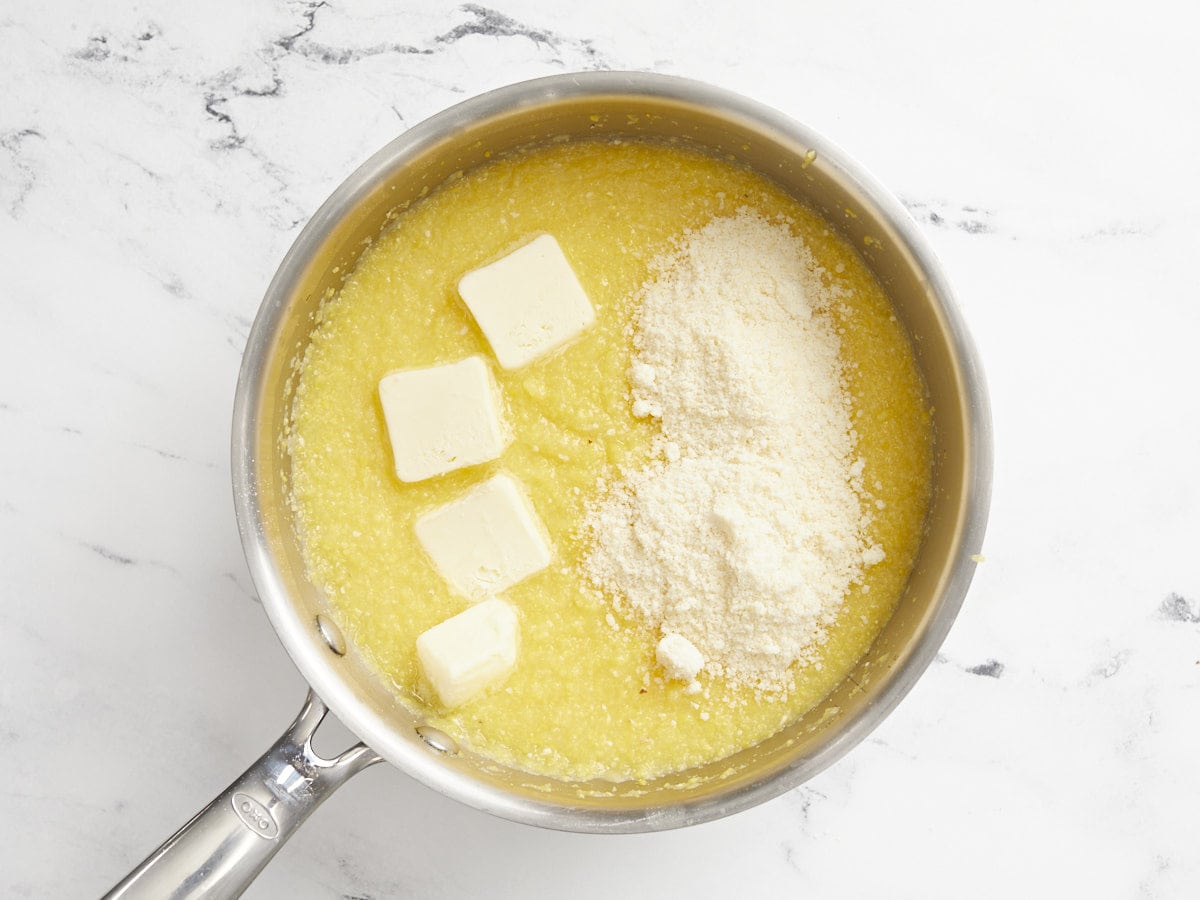
Remove the polenta from the heat, add 4 tablespoons of salted butter and ¼ cup of grated Parmesan, and stir until they have fully melted in.
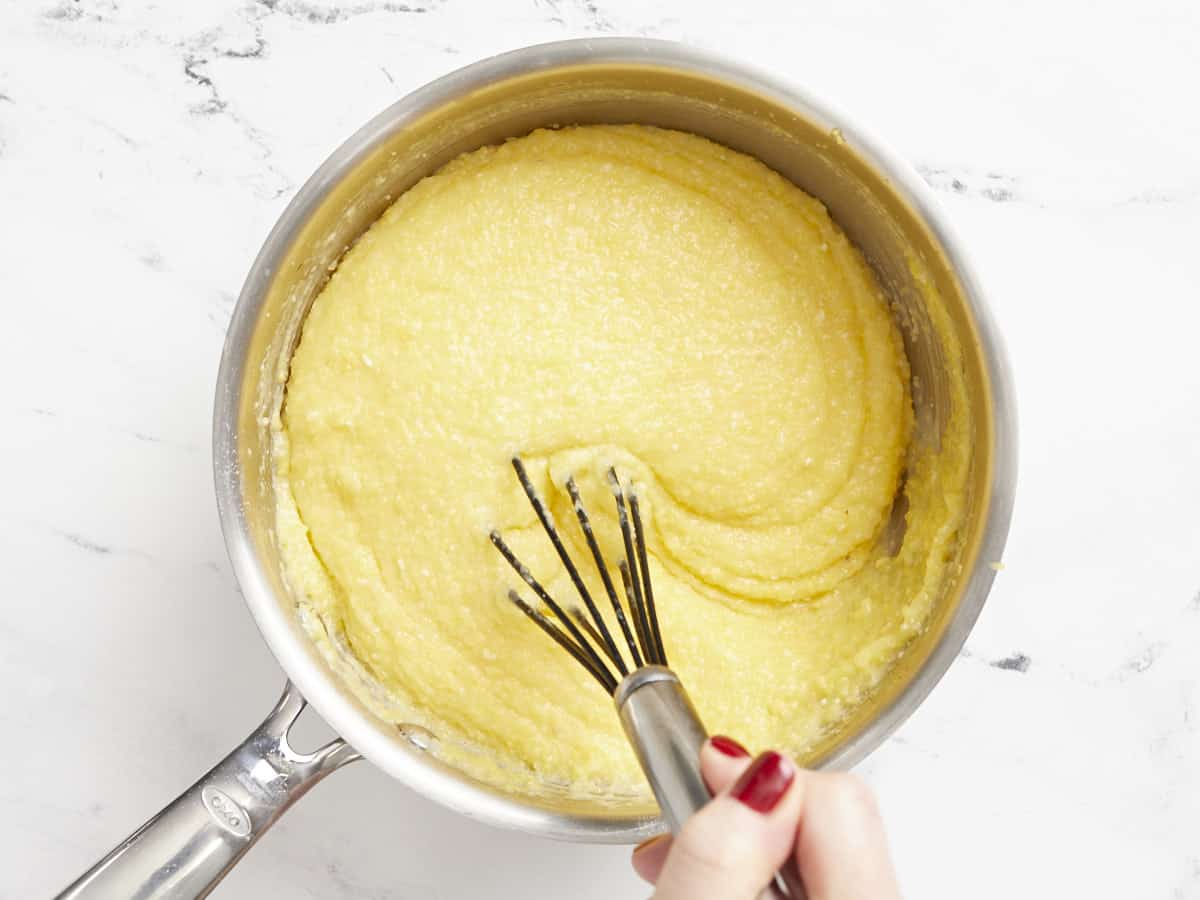
The polenta should now be super thick and creamy. Give the polenta a taste and adjust the salt if needed. Our chicken broth had plenty of salt, so no more was needed, but it will definitely depend on the type of broth used.
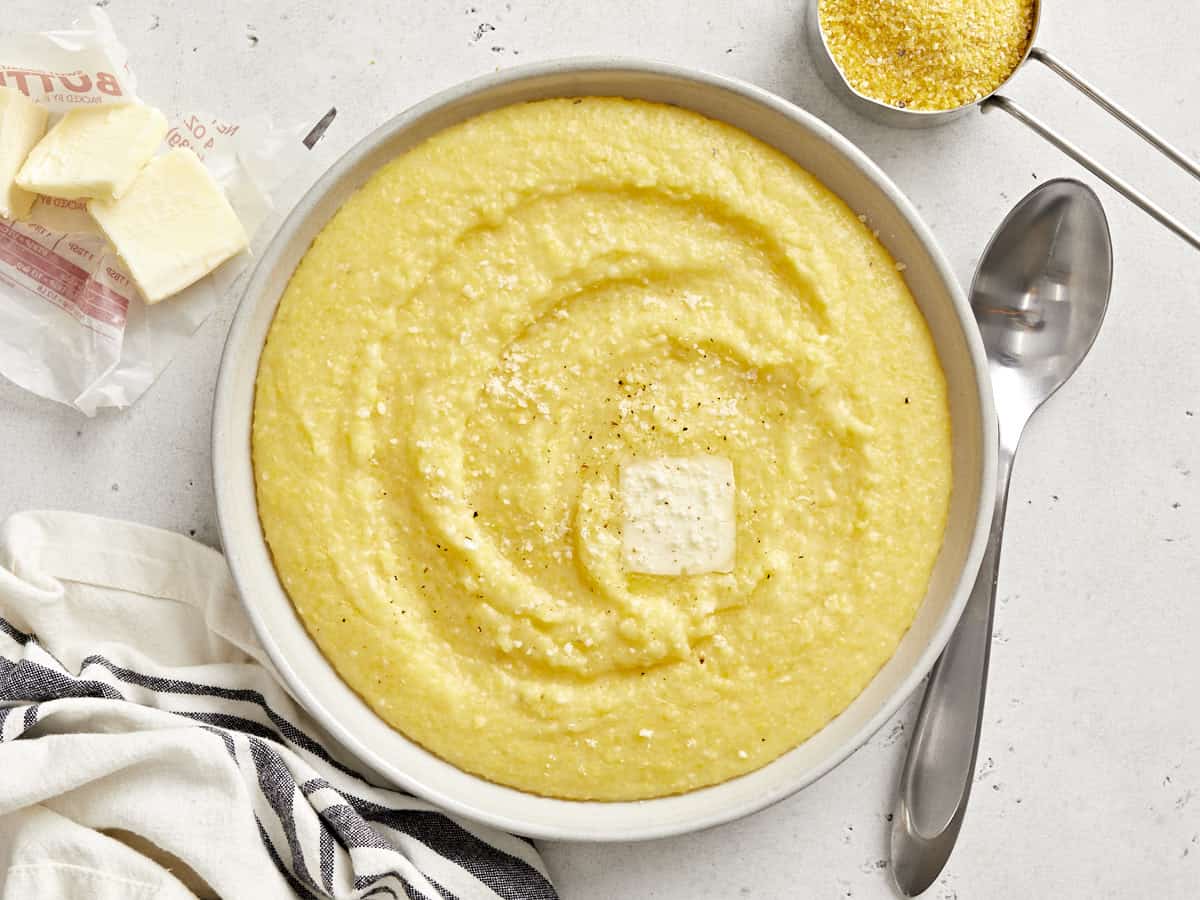
Serve the creamy polenta immediately while it is still warm and soft. You can add some freshly cracked pepper on top and a little extra butter or Parmesan, if desired.


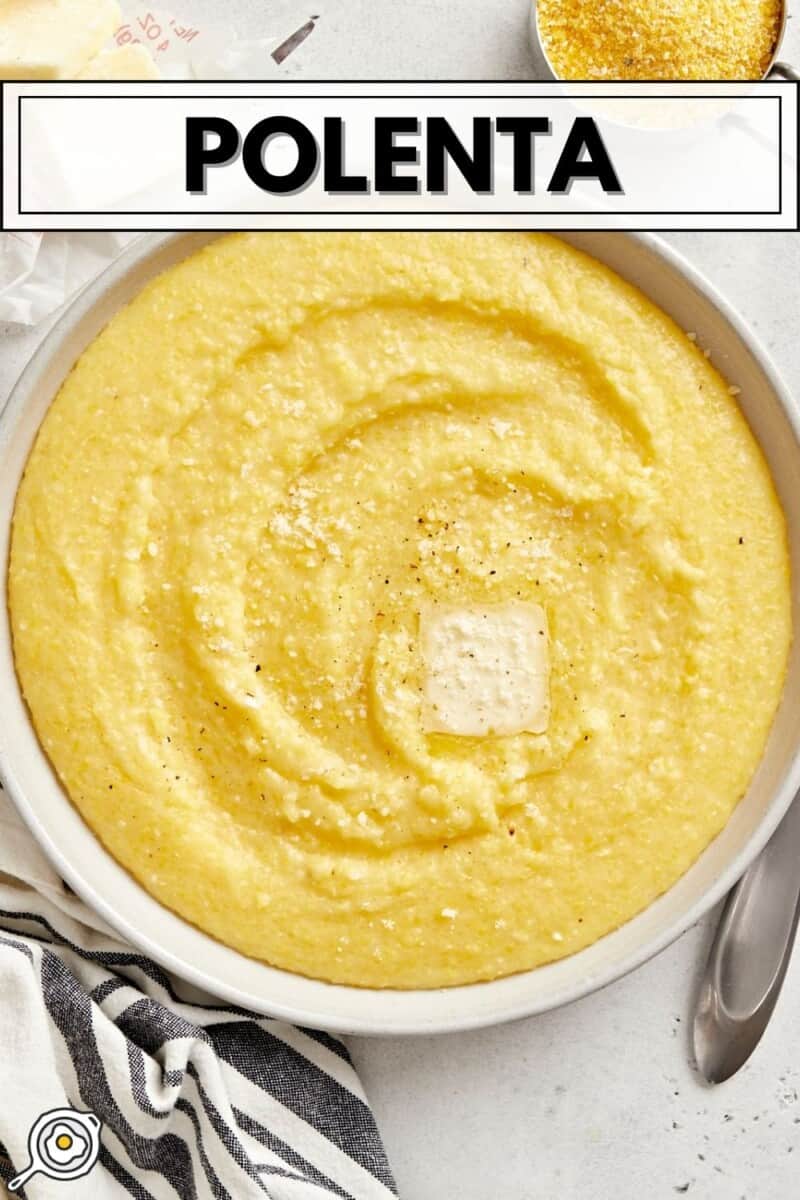
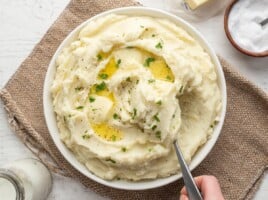

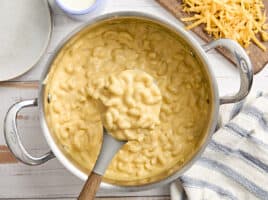
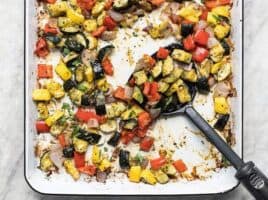
I made this tonight along with the chicken cacciatore and it was a great addition to the meal! Cant wait to make this again for breakfast and add in some spinach and carrots, YUM!
Delicious–love polenta, and also grits (never instant) and plain cornmeal “mush,” which my Danish grandmother used to serve both as a side dish and breakfast–her favorite way to use it was to pack it in a loaf pan, chill, then slice and pan fry in butter for breakfast and pour on syrup. Her mush was about the same recipe as this except she used water instead of broth and skipped the cheese. I think leftovers from this richer recipe would be delicious that way, too. A quick browse of the internet indicates that lots of folks, including Martha Stewart, like to slice firm cold polenta and fry it for various delicious purposes. I so appreciate recipes, particularly inexpensive ones, that can stretch to multiple meals! Thanks, Beth–you always have something here to inspire me.
I make this all the time so easy and so tasty
I’m so glad I found this great website
I love polenta, too! Like my grandma and mom, I make it with water and add butter and feta cheese once it’s cooked. It’s delicious any way you make it!
Some polenta recipe writers recommend adding a pinch of baking soda to the boiling liquid to help soften the corn and shorten cooking time. Any comments on this?